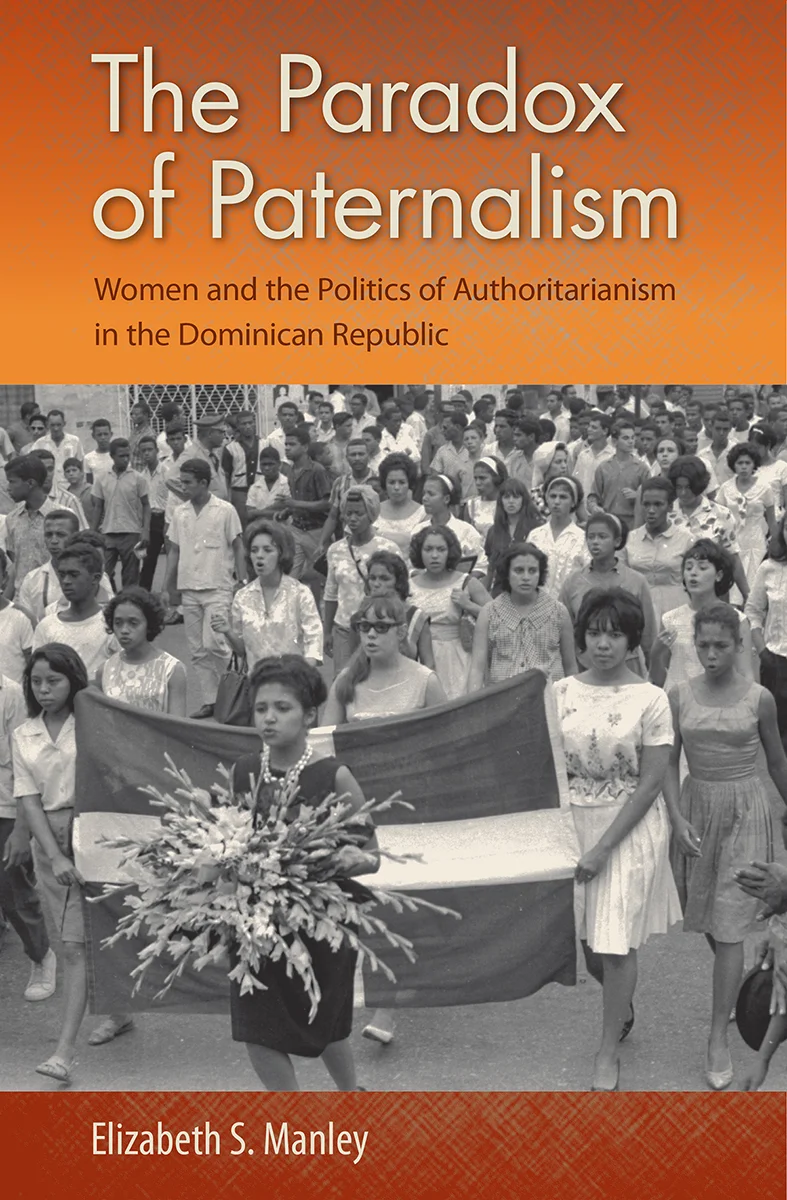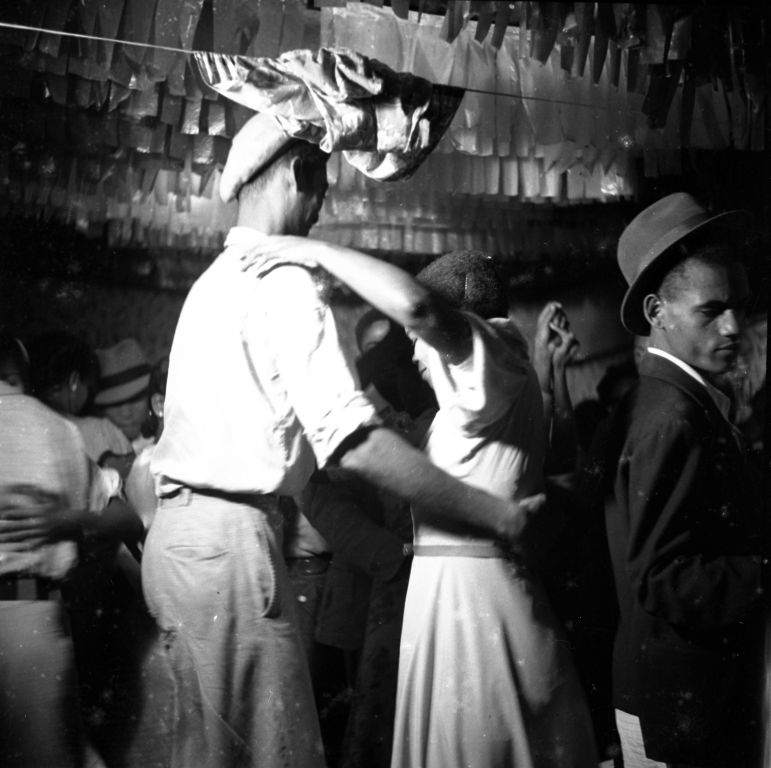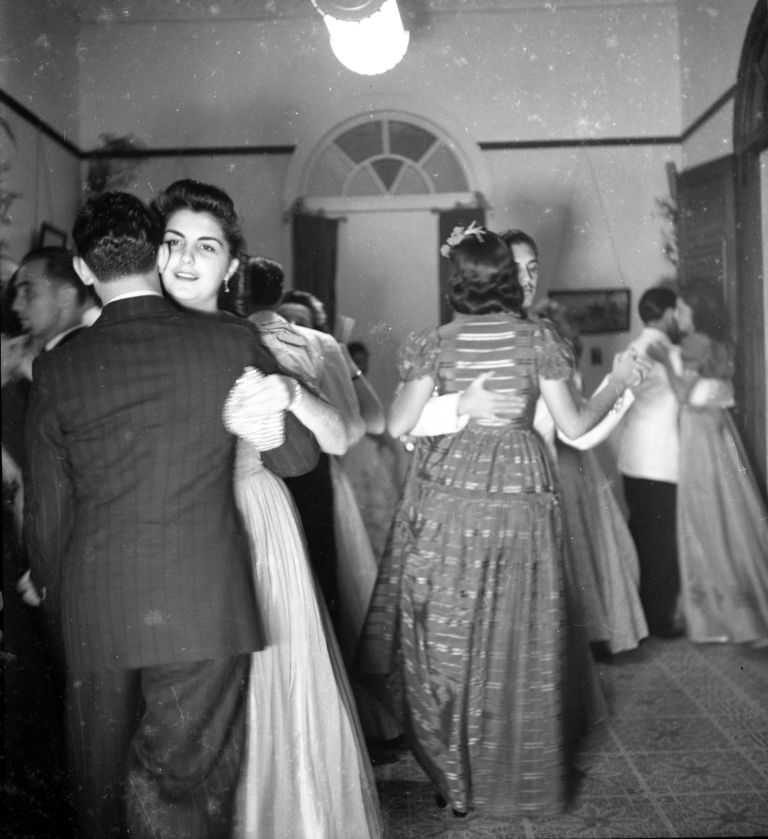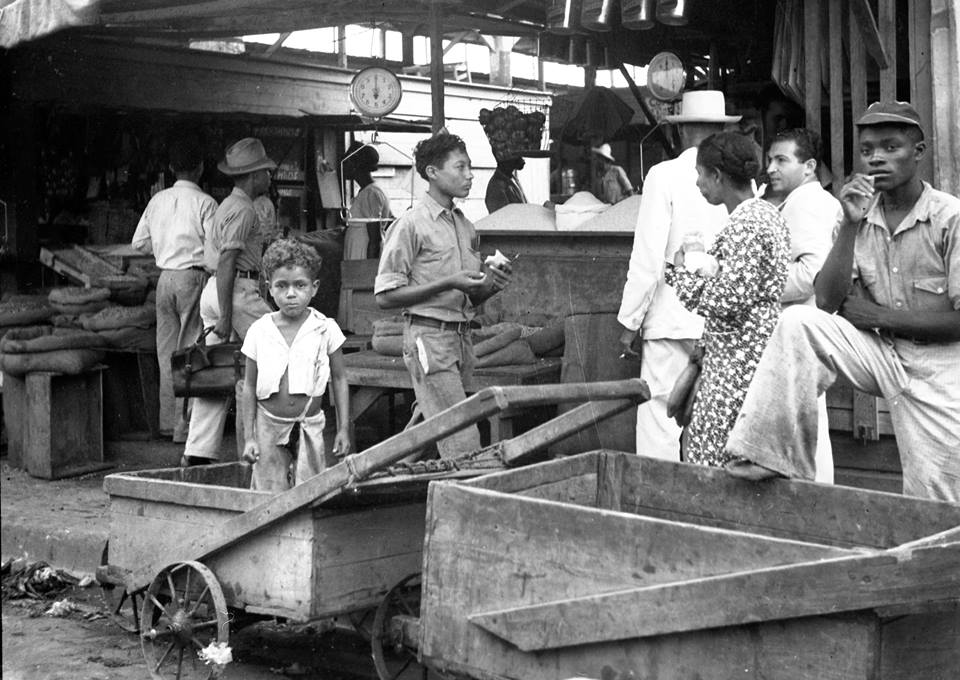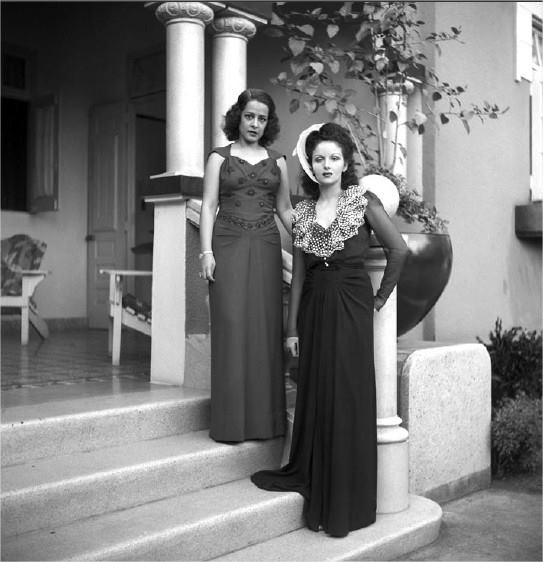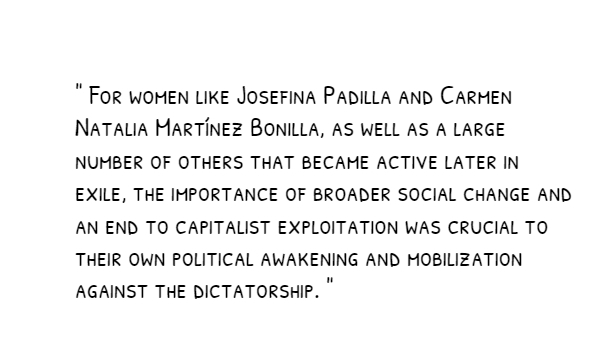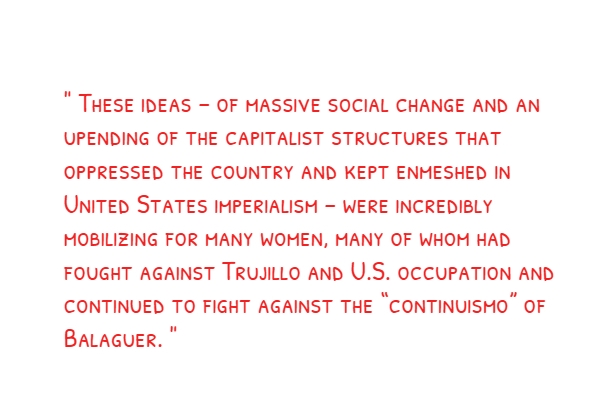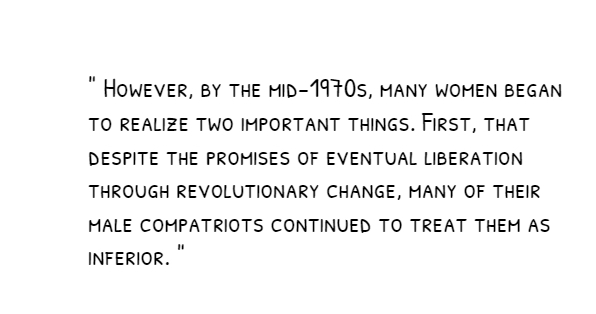Photo courtesy of Elizabeth Manley.
By Amaury Rodríguez and Nelson Santana
August 21, 2018
Elizabeth Manley is an Associate Professor of history at Xavier University of Louisiana and the author of The Paradox of Paternalism: Women and Politics of Authoritarianism in the Dominican Republic (University Press of Florida, 2017). Manley is also co-editor, with Ginetta Candelario and April Mayes, of Cien años de feminismos dominicanos [One Hundred Years of Feminisms], a two-volume book that documents the origins and trajectory of the feminist movement in the Dominican Republic from 1865 to 1965. In her new book, The Paradox of Paternalism, Elizabeth Manley surveys the often-overlooked political work and contributions of early feminists in the Dominican Republic as well as feminists who fought against dictatorial rule during 20th century. Her study looks at the radical proposals put forward by feminist activists while examining their political contradictions, strengths and weaknesses as they navigated both the modern capitalist state in a former colony and the international arena to advance social reforms. ESENDOM interviewed Elizabeth Manley to discuss her book, the history of women’s struggles in Santo Domingo and the meaning of Dominican transnational feminism in the past and in the 21st century.
What were some of the challenges that you faced while delving into the vast, understudied archives of Dominican women’s history?
I began this project on the role of Dominican women in 20th century politics in 2004, a time during which the Dominican National Archives were under the leadership of Ramón Alberto Font Bernard. The project, looking at the long history of women during the Trujillato and the twelve years of Balaguer, was challenging for several reasons, some logistical and others theoretical. First, the existing historiography was sparse; while a number of scholars and activists had made important contributions to the field of women’s history, there was not what one would consider a significant body of (written) knowledge on women in the Dominican past. Second, in that scarce history of women during the twentieth century, women appeared only at certain times and only as valiant heroines. To wit, women were “present” in the narratives of independence in the 19th century and later resistance to U.S. occupation in the early 20th, in the brief feminist movement that emerged in the late 1920s, and again as resisters to Trujillo and fighters in the second U.S. Occupation from the 1950s through 1965. Within that narrative, a small list of martyrs and saints dominated the sub-narrative: Rosa Duarte, María Trinidad Sanchez, Abigaíl Mejía and Ercilia Pepín and, of course, Minerva Mirabal, to name a few. The problem with this was that it was hard to see around them so to speak. Nearly everyone I met who heard about my project asked if I knew about the Mirabal sisters. I wanted to answer, “Of course I have, but I’m trying to find out about the rest of the women.” The stories that existed about women were either heroic biographies or lists of “mujeres destacadas” [outstanding or notable women]. I, of course, wanted to know and relate these stories, but I wanted more than that. In other words, the heroine narrative is only marginally helpful at best, and at worst it distorts and silences all the others that were contributing to the larger narrative around them and it sets up unfair expectations for contemporary Dominican women.
For me, many, many years and stories of women in Dominican history were missing or silenced. I had so many more questions than went un-answered in the sparse set of existing women’s biographies. I wanted to know what happened during the Trujillato for women, as well as during the Balaguer years. I wanted to know more about the women in the resistance and the left, not just the few sacred stories that people tell each other. I wanted to understand how Trujillo and Balaguer deployed gender as a social construct and a political tool. So I started my research in the national archives, which leads me to the final, and perhaps most difficult challenge, that I faced completing this project.
While there were a number of individuals who were extraordinarily helpful in my search for these silenced narratives, there was a real resistance to or, perhaps more accurately, an ignorance of, seeing women in the Dominican archives. It took no small amount of patience and a whole lot of reading between the lines to uncover women’s lives and actions within the archival materials of the AGN. Carefully combing through the files of Trujillo’s party, and the Department of the Interior, for example, helped me slowly amass a fairly substantial collection of materials that documented women’s lives and political contributions through the Trujillato and doce años. Further digging in smaller archives, a number of them located in the United States, as well as newspaper accounts and oral histories of women’s political involvement, helped fill out the picture. It took a considerable amount of time and resources, as well as a willingness to look for sources in unlikely places. However, in addition to being my own personal collection, I am proud to say that many of these primary sources have now been reproduced in the collection Cien años de feminismos dominicanos [One Hundred Years of Dominican Feminisms], that I co-edited with April Mayes and Ginetta Candelario and are available to the wider public.
Can you mention some of the key names of early feminist organizing and proselytizing in the Dominican Republic and briefly discuss their contributions to the fight for women’s rights?
The most frequently-cited names are, of course, Salomé Ureña, Ercilia Pepín, Abigaíl Mejía, and Petronila Angélica Gómez, all writers and educators. Their efforts and activism for women’s education and rights were crucial to the advancement of women from the mid 19th century through the early 20th century and ultimately to suffrage. Beginning with Salomé Ureña they effectively worked toward greater education for women, the formation of women and feminist groups like Club Nosotras and the Acción Feminista Dominicana (AFD), and the establishment of women as writers and publishers, including the founding of Gómez’ incredible magazine Fémina. More research and publication – in both scholarly and more popular venues – is desperately needed to uncover the extraordinary lives of these women and the many, many, more women they mentored.
Petronila Angélica Gómez. Source: Wikipedia
However, what for me is really crucial is not just a model of Dominican history in which we “add women and stir” but that one that considers the narrative as a whole fundamentally changed by the inclusion of women and gender into the picture of the past. Single stories and recuperative biographies are wonderful, but they don’t encourage us to see the narrative as fundamentally altered. They allow us, often, to simply see these women – Ureña, Pepín, Mejía, Gómez, Mirabal – as exceptions. What I have discovered in the course of researching this book is that while exceptional, these women were not exceptions. They were enmeshed in a much larger network of women working for change. Moreover, when we begin to incorporate their contributions to Dominican life and society we see a fundamentally altered set of stories about the past. For example, if we take the history of the AFD, an organization begun by Abigaíl Mejía and ultimately dissolved into the larger workings of the Trujillato after women achieved suffrage, we see a group of individuals struggling with the solidification of dictatorial rule. Like many other groups and organizations, they were forced to grapple with the Faustian bargain of working with the dictator in order to gain the goal they sought – votes for women. Both in a global context, and in the narrative of the early Trujillato, this is not a novel story, but rather one that helps us better understand the very complicated exchanges of a hardening dictatorship.
Abigaíl Mejia. Source: Biblioteca Virtual Wikia
What, in your view, is so unique about the development and trajectory of the feminist movement in the Dominican Republic? Do other analogous movements in the Americas exist?
For me one of the most engaging aspects of the Dominican feminist movement – on all sides of the political spectrum – was its skillful engagement with the international arena of women’s rights. From the very beginnings of the feminist movement in the early 20th century women activists found ways to connect with others across the hemisphere in advancing their cause. Discovering the correspondence of U.S. suffragist Doris Stevens with members of the Dominican feminist movement in the 1920s and 1930s made this point so very clear to me. Stevens, who had been a key figure in the fight for women’s suffrage in the U.S. began to work with Latin American suffrage groups after the U.S. vote was attained. The writings between her and a significant group of Dominican women activists are an astounding trove of solidarity, strategizing, and personal affection. The letters, as well as the examples of their work that they sent along to their “dearest Doris” demonstrate how keenly they were aware of the advantages obtained by such an alliance.
That kind of transnational activism continued on both sides of the political spectrum through the Trujillo and Balaguer years; it served to both shore up the authoritarian regimes as well as destabilize them. Most importantly, however, it advanced women’s rights on the ground and created a dense network of hemispheric solidarity that would be crucial in the final years of the doce años [twelve years] and a revival of the feminist movement in the 1970s. The thing I find so compelling about this organizational tactic is that it demonstrates the women of the Dominican Republic to be intensely politically savvy as well as real pioneers in the global movement for women’s rights. However, it also connects the Dominican narrative firmly with women’s movements happening across the hemisphere, including in places with analogous political conditions like Nicaragua, the Southern Cone, and Haiti.
What was the relationship between the rising labor struggles of the 1940s— the 1946 Great Sugar strike for instance—and the activism of women who self-identified as feminist during the Trujillo dictatorship?
Women aligned with the Trujillo dictatorship – and they aligned for reasons that ranged from pure survival through personal wealth and advancement – did not actually self-identify as feminist. They saw themselves as damas Trujillistas, working for the betterment of society and social welfare, predominantly through the maternalist programs of the Secretaria de Salúd Pública y Asistencia Social (SESPAS; Department of Public Health and Social Assistance). Once suffrage was granted in 1942, they began working with the all-female Partido Trujillista [Trujillista Party] and later through SESPAS, on programs that ranged from school lunch programs to literacy campaigns and fundraising efforts but none of these efforts did they consider feminist. As a group they generally remained silent on any issues that might be perceived by the regime as controversial including labor strikes and most glaringly, the 1937 Haitian Massacre.
Dominican Dictator Rafael Leónidas Trujillo reviewing troops. Source: Manuscripts and Archives Division, The New York Public Library. "Dominican Republic Participation - Reviewing troops" The New York Public Library Digital Collections. 1935 - 1945.
A number of the damas Trujillistas, including Isabel Mayer of Montecristi, were also involved in the conservative efforts of the border campaigns and other less than savory practices. I cannot say that I admire these women – I am much more naturally drawn to those that resisted the fascist tendencies of Trujillo and Balaguer – but I believe we must understand why they did what they did, and how conservative regimes so ably mobilize women in service to maternal-oriented programs and the larger constructs of nation and nationalism.
However, outside the party machinery of the Trujillato, the labor movement helped mobilize a resistance movement in which women were definitively key players. For example, the youth movement that began working in the 1940s against Trujillo and mobilized women like Carmen Natalia Martínez Bonilla and Josefina Padilla was directly connected to labor organizing. Again, none of the women within this movement identified as feminist and their work was solely focused on ending the dictatorship, but we can see their activism as moving the needle for what women were seen as capable within certain sectors of Dominican society.
Opponents of the Trujillo dictatorship such as the Mirabals Sisters, murdered by the regime in 1960, became frequent targets of state terror. A January of 1979 issue of ¡Ahora! magazine depicted the heinous murder of the three sisters by Trujillo.
How much did class and race influence and shape the political orientation of the early Dominican feminist advocates and activists?
The ability to be involved in the earliest feminist campaigns was rather closely conscribed by class and social status. The memberships of both Club Nosotras and AFD, for example, were predominantly filled by women of the upper-classes, in major urban centers who had been afforded the opportunity of a secondary education. A few exceptions stand out, including Petronila Angélica Gómez, an afro-Dominican woman from San Pedro de Macorís who started the first feminist magazine in the country and was an important force in the feminist movement. As is true for many first-wave feminist movements, the luxury to spend time organizing and advocating for women’s rights or other social justice causes was mostly limited to the women of the highest economic and social classes. For most of the Trujillato, this remained the case for the most involved of the damas Trujillistas. However, after the ajusticiamiento of Trujillo in 1961, there was a minor but perceptible shift in the composition of women’s activism as more women of the lower classes began creating spaces for themselves within the resistance. This includes a broadening participation in the 1965 April Revolution, for example, or the spreading of the Comitées de Amas de Casas [Housewives Clubs] protesting Balaguer’s austerity measures in the 1970s. By the mid-1980s and the re-emergence of a robust feminist movement, class (and to a lesser degree race) became central to the struggle for gender equality.
Can you talk about the role of Dominican socialist or left-leaning activists and writers in advancing the struggle for women’s rights?
The role of socialist or leftist ideas began to become crucial in the mid-1940s with the formation of youth resistance groups in the Dominican Republic. For women like Josefina Padilla and Carmen Natalia Martínez Bonilla, as well as a large number of others that became active later in exile, the importance of broader social change and an end to capitalist exploitation was crucial to their own political awakening and mobilization against the dictatorship. While even Minerva Mirabal reputedly admitted that the resistance movement was centered on a single goal – ending the reign of Trujillo – and lacked a coherent program of change, there is no denying the importance of leftist revolutionary ideology to the women of the 1940s and 1950s that were central in ending the Trujillato. (Including the perhaps apocryphal story that Mirabal herself had memorized Fidel Castro’s “History will absolve me” speech.) Moreover, as the end of the regime gave way to the second U.S. Occupation in 1965 and the Cuban Revolution continued to loom large, socialist ideas became even more crucial in the political mobilization of women in the Dominican Republic. These ideas – of massive social change and an upending of the capitalist structures that oppressed the country and kept enmeshed in United States imperialism – were incredibly mobilizing for many women, many of whom had fought against Trujillo and U.S. occupation and continued to fight against the “continuismo” of Balaguer. However, by the mid-1970s, many women began to realize two important things. First, that despite the promises of eventual liberation through revolutionary change, many of their male compatriots continued to treat them as inferior. Second, that there was no reason a war could not be fought on two fronts – for larger socio-economic and political change, and for gender equity. As a result, Dominican women of the left began to push against a model of socialist activism that asked them to wait for an eventual liberation and push more actively for legislative and social reform around immediate needs.
Your book covers the tumultuous decade of the 1960s in the Dominican Republic. What impact did the 1965 April revolution and the subsequent US military occupation of the D.R. have on women, their political involvement, and the country as a whole?
As I mentioned earlier, I think it is so important that we don’t just “add women” to the historical narrative, but that we really re-think how considering the other half of the population changes the story. The history of the occupation of 1965 is a prime example of why this matters. As I discuss in the book, 1965 represented a turning point for women’s involvement in politics and the feminist movement, but also for the country more broadly. Inasmuch as the women of the left changed the story of the April Revolution through their involvement as fighters, military instructors, and supporters, there is also no doubt that looking to the women of the right, including anti-communist protestors and Balaguer supporters, helps explain the return of authoritarian right wing politics to the Dominican Republic.
The defeat of the Dominican revolution opened the way to the establishment of a US-backed right wing authoritarian regime that lasted twelve years whose modus operandi was the use of state terror to crush the opposition. How did the women of the Left that you write about in your book survive and manage to advance their political goals?
The twelve years of Balaguer following the defeat of the April Revolution were brutal for anyone that dared resist the politics of “continuismo” or even advocate for basic human rights. Female activists, like their male compatriots, found ways to survive and advance their agendas in the interstices of politics and through transnational activist networks. However, one of the things that stands out about their work from 1966-1978 is the ways in which they mobilized maternalism in service to some greater visibility of the human rights abuses occurring in the Dominican Republic.
Police brutality against high school students during the Balaguer regime in the 1970s. Source: ¡Ahora! No. 596-14 abril de 1975, República Dominicana.
For example, the work of Gladys Gutiérrez and the Comite de Familiares de Muertos, Presos y Desaparecidos [Committee of Families of the Imprisoned, Dead, and Disappeared] demonstrates the incredible mobilizing power of maternal loss. Gutiérrez, who declared herself to president Balaguer in 1969 as the “constant informer of the violation of human rights” after the disappearance of her husband Henry Segarra, managed to garner an unprecedented level of national and international attention to the human rights violations being committed by the regime. Through the 1970s groups like the Comité and others continued to shine a light on Balaguer’s extensive campaigns of violence, intimidation, and murder. Protesting through the loss of loved ones, much like the Mothers of the Plaza de Mayo, proved a way to cut through some of the political obfuscation, even if it did not lead to immediate change.
Can you talk about to what degree were Dominican feminist influenced by the Sexual Revolution that took place in the US and other parts of the world?
There is a quote that I found from writer Grey Coiscou that was really influential in how I understood the exchange between the global movement for women’s rights and the Dominican feminist movement in the 1960s and 1970s. Responding in an interview for ¿Que? la revista del pueblo on the “women’s liberation” movement, she argued for an adaption of the more radical ideas of the global movement to the particular needs of the Dominican case. She contended that there was no way that the “hombres de la pequeña burguesía – con su ideología y su partido – nos vayan a liberar” and that it was time to accept the feminist tactics of the “jóvenes blancas radicales . . . con espiritu vanguardia” in order to create a “movement within a movement.” For me, this very succinctly encapsulates the ways women during this period sought to maintain an autochthonous movement while at the same time engage with some of the practices and ideas that had proven successful in other places. I found this to be true as I continued to do research into the women’s movement as it grew in the 1980s and engaged with transnational and regional collectives demanding women’s rights locally and globally. There can be a tendency to view North-South relationships as inherently unequal; while in principle this may be true, it is essential to look at the ways women’s movements in the Global South were extremely active players in the global movement and how the interchange was often more equal than might be expected.
Magaly Pineda. Photographer unknown. Source: Heroinas
What is the legacy of transnational feminism in the Dominican Republic and what lessons can activists, scholars and ordinary people draw from it?
I am reminded of a declaration from feminist activist Magaly Pineda in the early 1980s. She argued for a feminist movement that was “committed to the struggle for power, with clear determination to gain for us, the women, ‘half the sky,’ a space where all our subjugated, millenary potential can flourish and where equality is no longer a utopia.” Pineda was a model of transnational activism for women’s rights who remained cognizant of intersectional concerns of race, class, sexuality, and identity. Throughout my research I was constantly amazed by the persistence of Dominican women across these challenging decades. Their willingness to engage all the tools at their disposal, and to continue even in the most bleak circumstances, is certainly an inspiration. But it is also a reminder that resistance occurs – and can be transformational – in even the smallest spaces. As Pineda herself argued, “to have commitment, perseverance, a sense of wonder, and to link personal processes with the political, that is a feminist principle. The personal is political. You have to be revolutionary in the house, on the street, and in the bedroom.”
____
Related articles:
Colonial Phantoms –Interview with Dixa Ramírez
Maribel Núñez habla de la lucha por los derechos reproductivos de la mujer en República Dominicana
Ten Research Ideas About Dominicans That You Should Pursue (Part 1)
Fifteen Research Ideas About Dominicans That You Should Pursue (Part 2)
Eight Research Ideas about Dominicans That You Should Pursue (Part 3)





